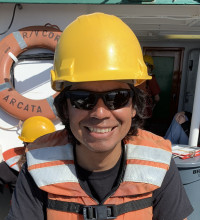In 2012, California finalized a plan for its system of Marine Protected Areas (MPAs) — setting aside a network of sites where activities like fishing (and mineral extraction) are limited or prohibited altogether to protect oceanic resources for future generations. To understand whether these MPAs are effectively protecting the ocean, they must be monitored.
Sandy beaches and their surf zones are “edge” ecosystems that form a significant component of many of the state’s Marine Protected Areas (MPAs). And while beaches and surf zones are well-known and beloved resources for humans, they also provide key foraging areas for fish, birds and marine mammals. However ecological monitoring of these ecosystems has been limited — a potential problem given climate change and other human-caused changes to the coast.
To enhance the understanding of sandy beach and surf zone ecosystems in California, with a particular eye towards analyzing the performance of MPAs, this project will conduct a variety of surveys. The surf zone surveys will examine the direct impacts of MPA protection, which prohibits fishing, on the many fish species that use the surf zone, including surfperch, croakers, sharks and rays. MPA protection can also indirectly affect surf zones and sandy beaches via changes to the rocky reefs and kelp forests that provide inputs of organic materials to beach and surf zone ecosystems, largely in the form of drift kelp that washes to shore, which is known as wrack. These indirect effects of MPAs are being evaluated through beach surveys of foraging birds (abundance and diversity) and kelp wrack (composition and abundance). Both types of surveys will also track the physical characteristics of these ecosystems (widths, slopes, wave climate, etc.) and the presence of humans and dogs, including what activities visitors engage in. The results of these surveys will help assess how protection status may be affecting beaches and surf zones and measure progress towards the conservation goals of the Marine Life Protection Act, which created the MPAs. This is a continuation of earlier funded projects; see also R/MPA-49B.
 Jose Marin Jarrin
Jose Marin Jarrin